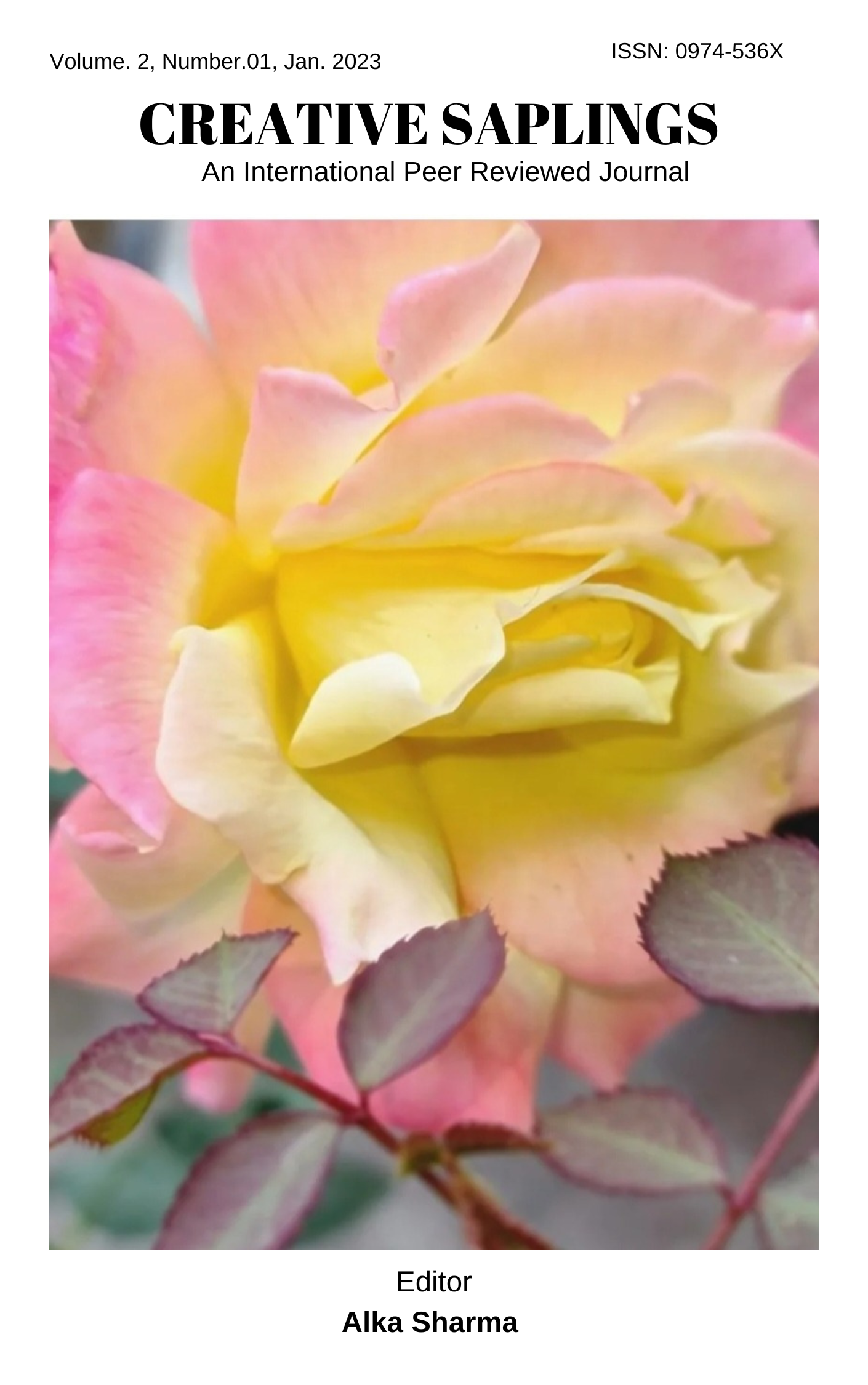Life of Women Adversely Affected by Communal Frenzy in Felanee by Arupa Pathangia Kalita
DOI:
https://doi.org/10.56062/gtrs.2023.1.10.193Keywords:
Women, Ethnic violence, struggle, Felanee, Arupa Pathangia Kalita.Abstract
The adverse consequences of war and violence are always more on women and children. Men are always the active participants in violence, and women are invariably observed as the passive receiver of the same. Women have to face the harmful effects of war and violence in the form of lost husbands and loss of self-respect. This paper explores the life and struggle of a single woman who lost her husband during the ethnic conflicts. Arupa Patangia Kalita is a famous Assamese novelist who lives in Darrang, Assam. Her novel Felanee was originally written in Assamese in 2003 and translated by Deepika Pukan in 2011. The story of Felanee reveals the awful experiences of a woman, Felanee in the midst of ethnic riots and frenzy atmosphere in Assam. The events mentioned in the novel relate to the real lives of the people living there. Through her protagonist, the writer describes some of the adverse experiences of people during ethnic conflicts, especially the women living in such places. At the time of Felanee’s birth, she was thrown into damp to die but somehow, she survives and starts her battle against all odds. The paper reveals how women sustain their families, especially children, while facing many troubles due to ethnic violence and bloodshed. It also explores how they are marginalized in society and how they support each other in difficult times. Felanee has to face all the brutal consequences of the communal frenzy. She lost almost everything she had, including her loving husband. She was once a queen, but after the riots, she was forced to live like a laborer.
Downloads
References
Works Cited:
Saxena, Chandni. ‘Dimensions and Dynamics of Violence during Partition of India’. Proceedings of the Indian History Congress, vol. 74, Indian History Congress, 2013, pp. 909–920, http://www.jstor.org/stable/44158892.
Daiya, Kavita. Violent Belongings. Temple University Press, 2008, http://www.jstor.org/stable/j.ctt14bt2fc.
Habib, Zehra, and Kamal Ahmed Soomro. “Underprivileged Women Impacted by Ethnic Violence: Deconstructing Lives - Gender Issues.” SpringerLink, 17 Mar. 2021, link.springer.com/article/10.1007/s12147-021-09277-4.
Berenschot, Ward. “Riot Politics | Hurst Publishers.” HURST, 1 Jan. 2012, www.hurstpublishers.com/book/riot-politics-2.
Kalita, A. P. ‘The Story of Felanee (Deepika Phukan)’. Deepika Phukan. Trans). Zubaan, 2011.
“Ethnic Conflict - Wikipedia.” Ethnic Conflict - Wikipedia, 1 Oct. 2022, en.wikipedia.org/wiki/Ethnic_conflict.
Roy, Jaytilak Guha. ‘POLITICS, RELIGION AND VIOLENCE IN INDIA’. Indian Journal of Political Science, vol. 52, no. 4, Indian Political Science Association, 1991, pp. 439–447, http://www.jstor.org/stable/41855581.
Routray, Bibhu Prasad. Battle for the Bodo Heartland. Institute of Peace and Conflict Studies, 2008, http://www.jstor.org/stable/resrep09232.
Bhavna Mehta, and Trupti Shah. ‘Gender and Communal Riots’. Economic and Political Weekly, vol. 27, no. 47, Economic and Political Weekly, 1992, pp. 2522–2524, http://www.jstor.org/stable/4399146.
Banerjee, Purna, et al. ‘“why so Much Blood?” Violence against Women in Tripura’. Economic and Political Weekly, vol. 49, no. 43/44, Economic and Political Weekly, 2014, pp. 49–56, http://www.jstor.org/stable/24480993.
Choudhury, M. ‘Violence and Marginalization of Women in Arupa Patangia Kalita’s The Story of Felanee’. International Journal of English Language, vol. 2, no. 5, 2014, pp. 570–578.
McKay, Susan. “The Effects of Armed Conflict on Girls and Women.” Peace and Conflict: Journal of Peace Psychology, vol. 4, no. 4, American Psychological Association (APA), Dec. 1998, pp. 381–92. Crossref, https://doi.org/10.1207/s15327949pac0404_6.
Downloads
Published
Issue
Section
License
Copyright (c) 2023 Munish Kumar Thakur

This work is licensed under a Creative Commons Attribution-NonCommercial 4.0 International License.





